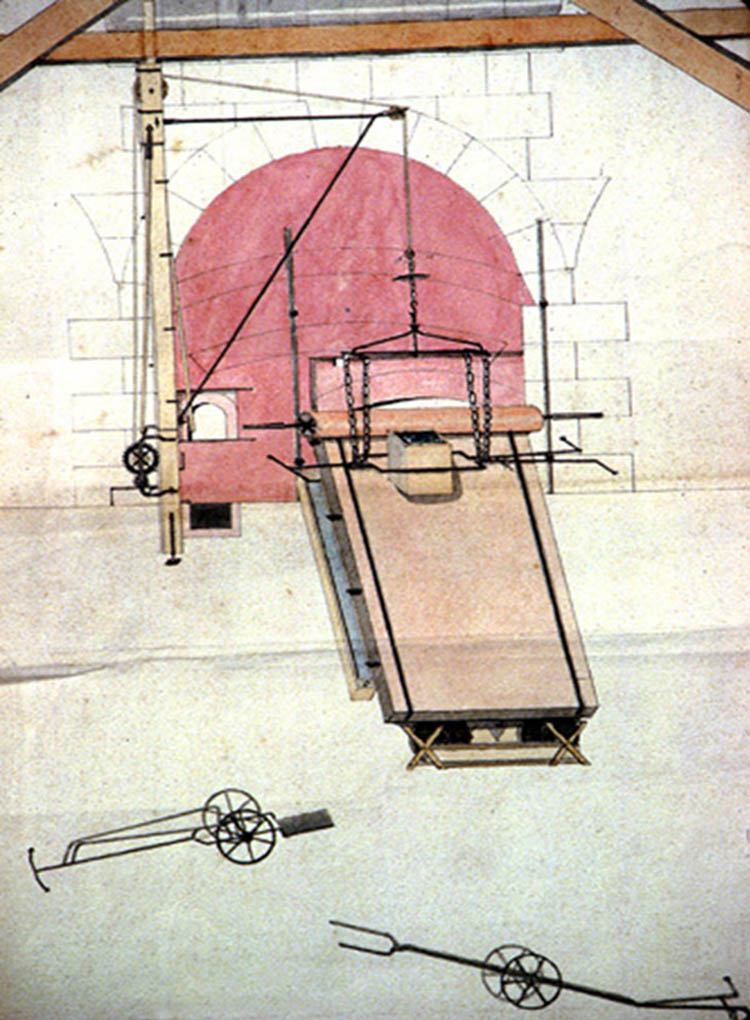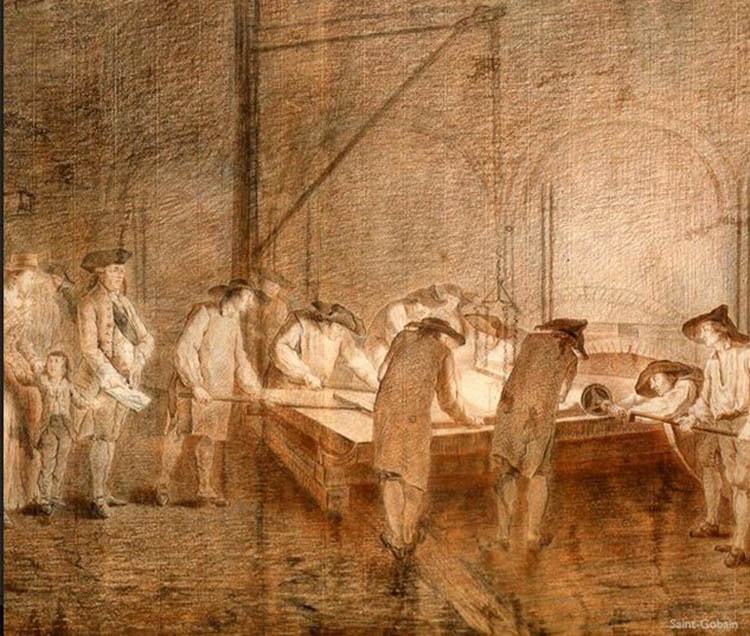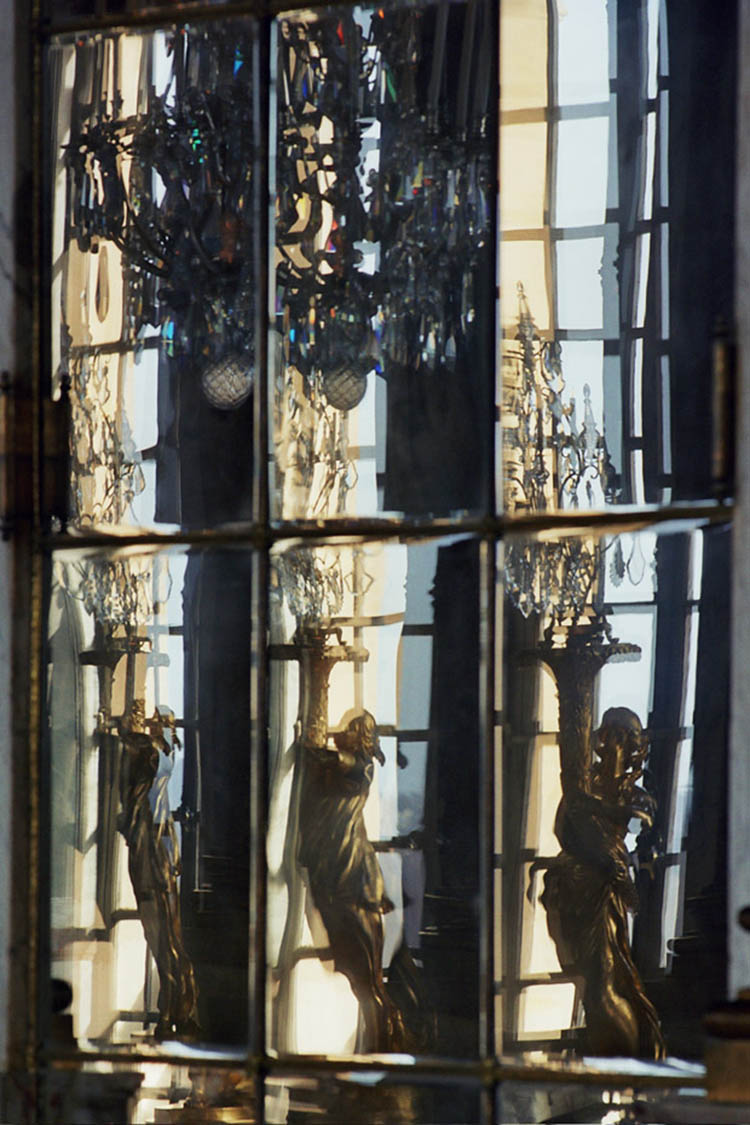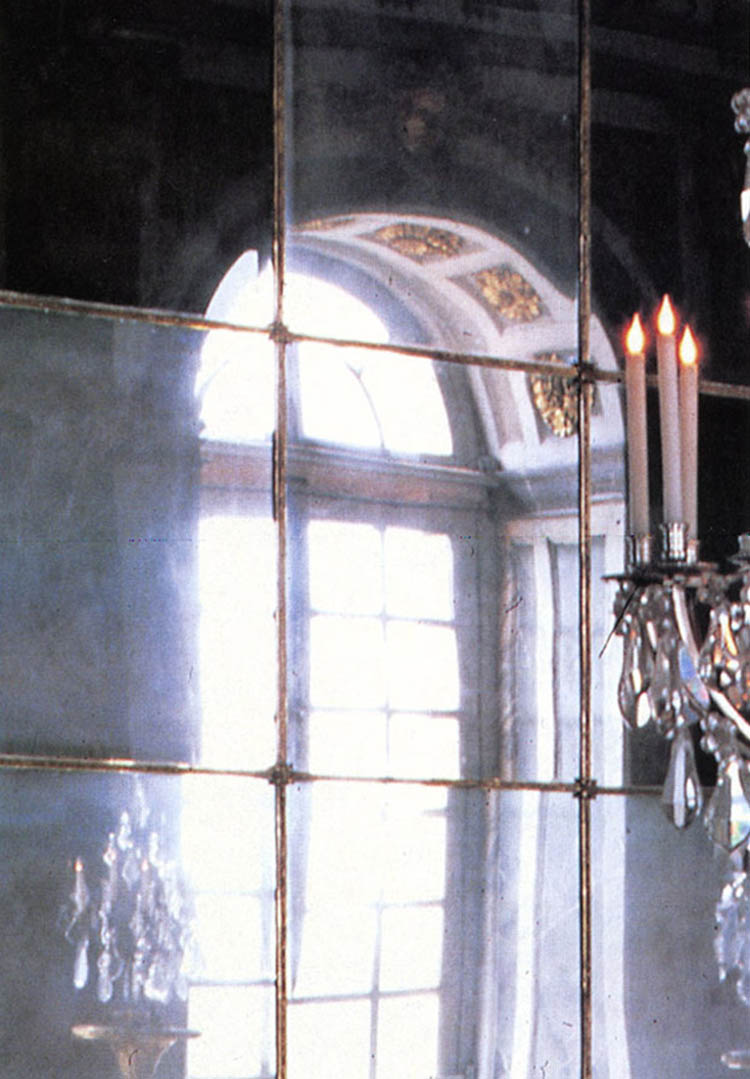Mercury mirror
Download PDFBefore mercury mirrors
The Chinese (since the Neolithic Period), the Egyptians (2,900 BC), the Greeks and the Romans all shared the desire to contemplate their reflection and needed a tool to do so. Historians and archeologists found traces of mirrors, mostly hand-mirrors, made out of polished metal, usually bronze or silver. Because they were small in size, they did not allow one to contemplate oneself from head to toe. These rare objects belonged to highly ranked people.
It was not until the 13th century that a new way of producing mirrors appeared. The first method was to deposit a thin layer of silver or polished lead on the glass. Later on, this process was improved and the method for making tin mirrors was discovered. It used a layer of silvering made of lead, tin, and bismuth, instead of silver and lead, on the glass plate.
The discovery of the mercury mirror
Although the earlier methods had emerged in the North, Venice was unquestionably the leading producer of mercury mirrors for many years. Venice's presence on the seas and in the salt trade made it one of the richest cities in Europe. It was a fertile ground for new inventions, particularly those linked to the luxury market. This is where the process for making mercury mirrors was invented in the 1400's. This type of glass silvering would remain in use for 400 years. The technique is to flatten out pieces of glass obtained from blown glass cylinders with a stone. Once they are flat, several layers of tin are deposited on the glass plates and then sanded down to a smooth surface. Finally, it is covered with a layer of mercury, also smoothed and flattened out with a stone and woolen stamps.
The Venetian mirror-makers were sworn to secrecy and locked up so as not to let out the precious method of mercury mirror production that all of Europe envied. Claiming that it was to avoid fires, the city finally sent them to the island of Murano , where the Murano glass factories that are still renowned today were created. Anyone who entered or left the island, or sold the secret, would be executed.
The mercury mirror fortune
Despite all of Venice's efforts, the method was subject to intense industrial spying, and a few mirror-makers soon exported their know-how. Colbert himself sent spies from 1660, and by 1672, Louis XIV's France was able to produce high-quality mirrors. Venetian importation was banned. Colbert's and the Sun King's policy favored French production, created numerous factories in order to encourage interior commerce.
One of the most famous examples of this French production is of course that of the Galerie des Glaces at the Versailles palace and its 357 mercury mirrors. The Saint-Gobain factory, founded in 1665, completed this colossal work. They used flat-surface glass casting from 1684, which was a huge help to the operation. In the 1690's, lamination, or laminated glass, was invented. It made for more resistant and larger creations.
Today, 80% of these mirrors are originals. These can be recognized because they are not beveled. They are the proof that the new French factory was able to take the mirror monopoly away from Venice, mirrors being luxury items at the time. These mirrors were popular for interior decorating under Louis XIV.
The end of the mercury mirror
The production of mercury mirrors had several drawbacks. The mirrors were very expensive and rather small in size, but worst of all, it was the cause of many mirror-makers' death. Mercury is a highly toxic and dangerous chemical element, which made for frequent deathly accidents. A mirror-maker's average life span was no longer than 10 working years.
As soon as a new method was discovered, this one was banned. In 1835, Justus von Liebig (1803-1873, Austrian) invented the silver nitrate mirror, a new, non-toxic process of spraying a thin layer of silver on a glass plate lined with tin to emphasize the mirror's reflectivity.
Today, mirrors are produced with aluminum vacuum coating, using the same method but substituting silver with aluminum.
How to recognize a mercury mirror?
Mercury mirrors were made with thicker glass plates than those used today. Therefore, one must look for the depth of the glass layer to know if it is mercury or not.
Tip: Place a rod (pen or toothpick) on the mirror. If the point touching the mirror looks like it is directly “touching” its reflection, the glass layer is thin enough and the mirror is probably modern. On the other hand, if the point is separate from its reflection, then it is probably mercury (prior to 1835).
There are other visual techniques that are harder to evaluate, but that connoisseurs will be able to identify at first glance. As previously stated, tin is used in mercury mirrors. The mixture of the two materials produces a kind of explosion, and the tin particles projected to the surface of the mirror sparkle.
Tip:
- The mirror must be directly lit; if it sparkles, it is undoubtedly a mercury mirror. The reflection in a later silvered mirror is mat.
- The back is a silvery (blueish) color and looks slightly grainy.
Click here to see our selection of mercury mirrors.
Bibliography
Graham Child, Les miroirs, 1650-1900, Ed. Flammarion, 1991.
B. Schweig, “Mirrors”, Antiquity, 1941, P. 257-268, Vol. 15.
Jurgis Baltrušaitis, Le miroir, essai sur une légende scientifique, révélations, science fiction, Ed. Le Seuil, 1978.
Sabine Melchior-Bonnet, Histoire du miroir, Ed. Imago, 1994.
Morisot J.M., « Miroiterie », Tableaux détaillés des prix de tous les ouvrages du bâtiment. Vocabulaire des arts et métiers en ce qui concerne les constructions, Ed. Carilian, 1814.
Maurice Hamon (Auteur) & Gérard Paul-Cavallier (Dessinateur), Carnet de voyage à Saint-Gobain, Ed. Somogy, 2001.













